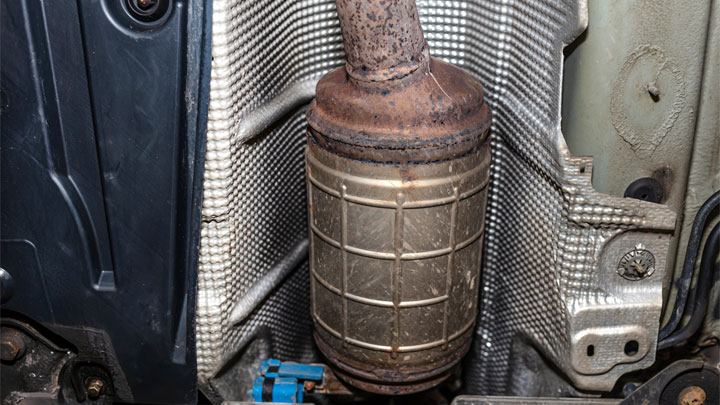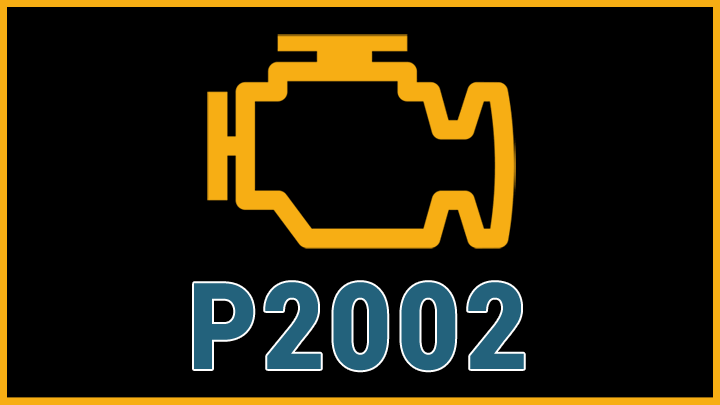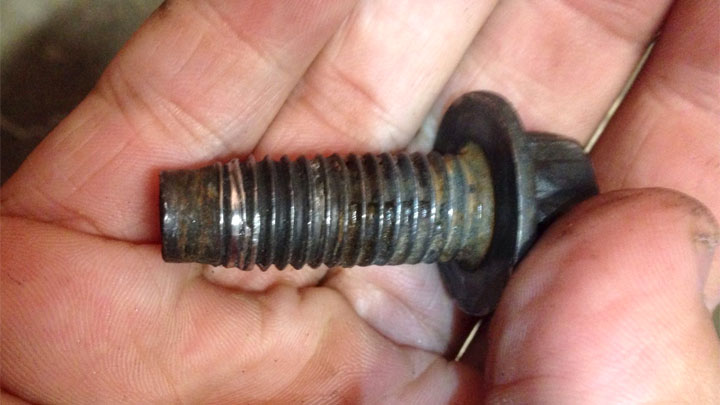Last Updated on July 29, 2022
The average diesel truck is considered reliable and can be counted to perform, no matter the severity of the task at hand. However, the occasional mechanical issue does arise from time to time, throwing quite the wrench in our plans. This is not only aggravating but can be quite concerning as well, leaving the average motorist to consider the cost of any repairs to follow.
For most, remedying such issues begins with understanding the circumstances surrounding the mechanical failure in question. Luckily, modern diesel trucks register and store diagnostic fault codes as they arise, providing clues that can be followed during the diagnostic process.
One such diesel-related diagnostic fault code is DTC P2002, which is indicative of a relatively common emissions system fault. Recognizing this fault as soon as it is logged often proves essential to minimizing the costs associated with the subsequent repair, and the time required to restore a truck to proper operating condition.
Read on to learn more about diagnostic fault code P2002, as well as how to handle such issues, should they arise in the future.
What Does Code P2002 Mean?
Diagnostic fault code P2002 indicates that your vehicle’s Diesel Particulate Filter (DPF) is not operating at peak efficiency. This typically results in increased vehicle emissions, as well as decreased performance.
In the most severe of cases, an engine might actually “derate“, falling into a dedicated limp-mode of sorts. However, to better understand this principle, one must first familiarize themselves with DPF operation.
Beginning in 2007, domestic diesel-powered vehicles were held to more stringent emissions standards. This led to the introduction of new and innovative smog-control equipment, as manufacturers struggled to reach compliance.
One such piece of equipment is the DPF. This filter traps a significant portion of the soot generated by diesel combustion, before converting this soot to a less noxious state.
Since an engine’s DPF operates with a natural degree of backpressure, specialty sensors are used to monitor flow and pinpoint potential clogging. These sensors are also used to assess the need for regeneration, or the natural cooking out or de-carboning of a vehicle’s DPF, which must take place to maintain functionality.
In the case of DTC P2002, a vehicle’s PCM has determined that feedback from the exhaust’s backpressure sensors has proven less than ideal. As such, the ECM logs an active fault code, before further monitoring backpressure readings, for further signs of heavy soot loading.
See Also: 10 Best Diesel Engines (In the Last 20 Years)
Symptoms of Code P2002

Diagnostic fault code P2002 is often accompanied by a wide range of additional symptoms, some of which prove more severe than others. Recognizing these symptoms can prove to be key in expediting the diagnostic and repair process.
The following are several of the most common symptoms associated with DTC P2002.
- Illumination of check engine light
- Reduced fuel economy
- Increased black smoke from exhaust
- Sluggish engine performance
- Fuel dilution of engine oil
- Partial or full derate
Causes of Code P2002

Diagnostic fault code P2002 can be caused by a number of underlying factors, some of which tend to be more prevalent than others. Understanding these potential causes can prove highly beneficial during the diagnostic process.
The following are several of the most common causes of DTC P2002.
- Air leak upstream of DPF
- Extremely dirty air filter
- Use of high-sulfur fuel
- Constant, low-speed operation
- Clogged or damaged DPF
- Fault emissions system intelligent devices
- Compromised ECM
- Faulty back-pressure sensor
Is Code P2002 Serious?
Diagnostic fault code P2002 is generally considered to be of moderate severity. Essentially, the severity of this fault increases, the longer this code is active. While in some cases, subsequent regeneration will eliminate this code without intervention, this is not always the case. A failure to rectify this condition can cause a host of additional issues.
In the most severe of cases, prolonged periods of particulate filter inefficiency will cause a truck’s engine to derate, or enter a limp mode of sorts. This condition severely limits a vehicle’s performance and top speed, as a measure of self-preservation. Upon entering full derate some trucks will even shut down completely.
In any event, the root cause of DTC P2002 should be thoroughly diagnosed and repaired as soon as possible. This is especially true if this particular code has been active for more than a couple of days.
If you do not feel comfortable tackling such repairs yourself, make an appointment with a local trusted service center at the first available opportunity.
See Also: Average MPG of Duramax Diesel Trucks
How to Fix Code P2002

The following steps can be followed to assist you in diagnosing and repairing the root cause of your vehicle’s P2002 diagnostic fault code. As always, you are advised to consult factory-specific service literature for your particular vehicle before attempting any such repairs.
#1 – Check For Additional DTCs
Before beginning the diagnostic process, check for the presence of any additional diagnostic faults with the use of a quality scan tool. Thoroughly diagnose additional faults that are present before proceeding.
#2 – Carefully Inspect Sensor Wiring
You will begin the diagnostic process by carefully checking for any frayed, or otherwise damaged, backpressure sensor wires. Damage of this type warrants immediate repair before proceeding.
#3 – Check For System Leaks
Next, carefully inspect your vehicle’s exhaust for loose or damaged clamps. The location of a loose exhaust clamp is typically given away by the appearance of a slight soot trail. Tighten or replace all affected clamps before proceeding.
#4 – Inspect Back Pressure Readings
With the use of a high-quality scan tool, compare all applicable backpressure readings to values specified by your vehicle’s manufacturer. If all readings fall within specification, initiate a forced regeneration.
#5 – Clean & Test Backpressure Sensors
All affected backpressure sensors should now be removed, cleaned, and tested for functionality with the use of a multimeter or appropriate scan tool. Results of this testing should be compared to acceptable values provided by the vehicle’s manufacturer.
#6 – Inspect DPF
If DTC P2002 still persists, even after replacing all defective backpressure sensors, you will need to remove and inspect your vehicle’s DPF. Upon removal, the DPF can be taken to one of many specialty shops that perform flow testing.
Apparent face clogging can be remedied through a specialized cleaning procedure, while total soot loading will likely require replacement.
#7 – Recalibrate ECM (If Necessary)
If none of the above mentioned steps have yielded satisfactory results, one might consider having their vehicle’s ECM parameters analyzed. In certain instances, the ECM itself must be reflashed.




